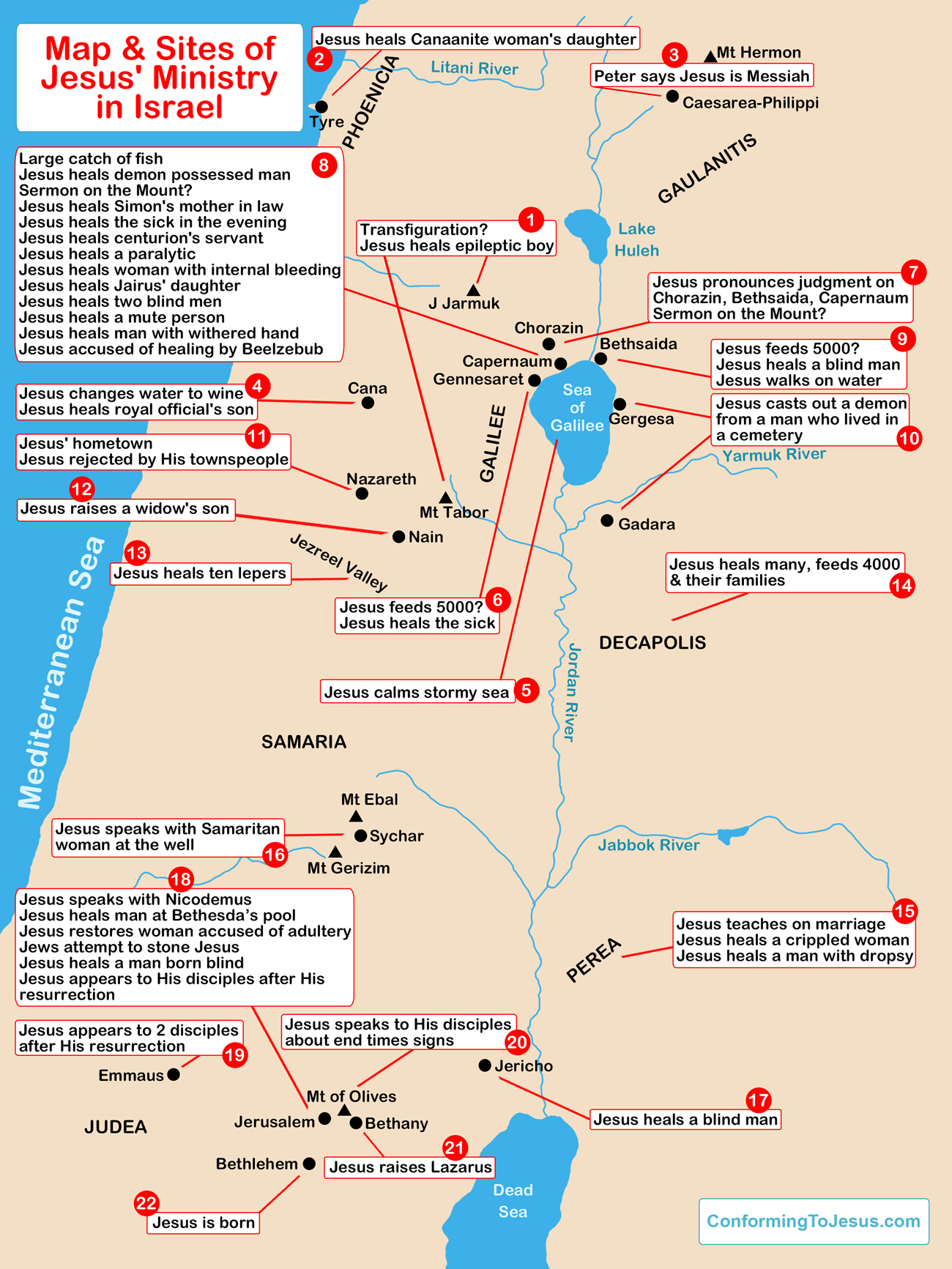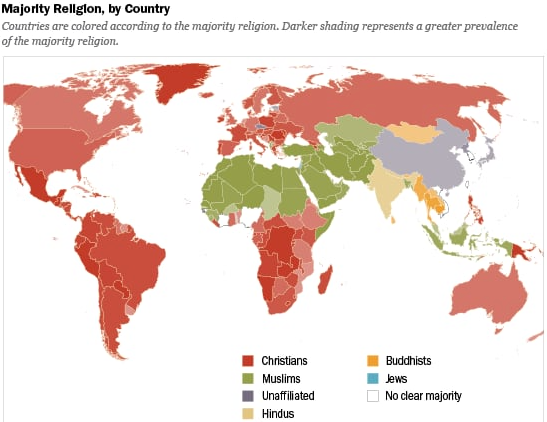___________________________________________________________________________
“In the fifteenth year of the reign of Tiberius Caesar (in 29 AD) when Pontius Pilate was governor of Judea (26-36 AD)….When all the people were being baptized, Jesus was baptized too…Now Jesus himself was about thirty years old when he began his ministry.” Luke 3:1,23
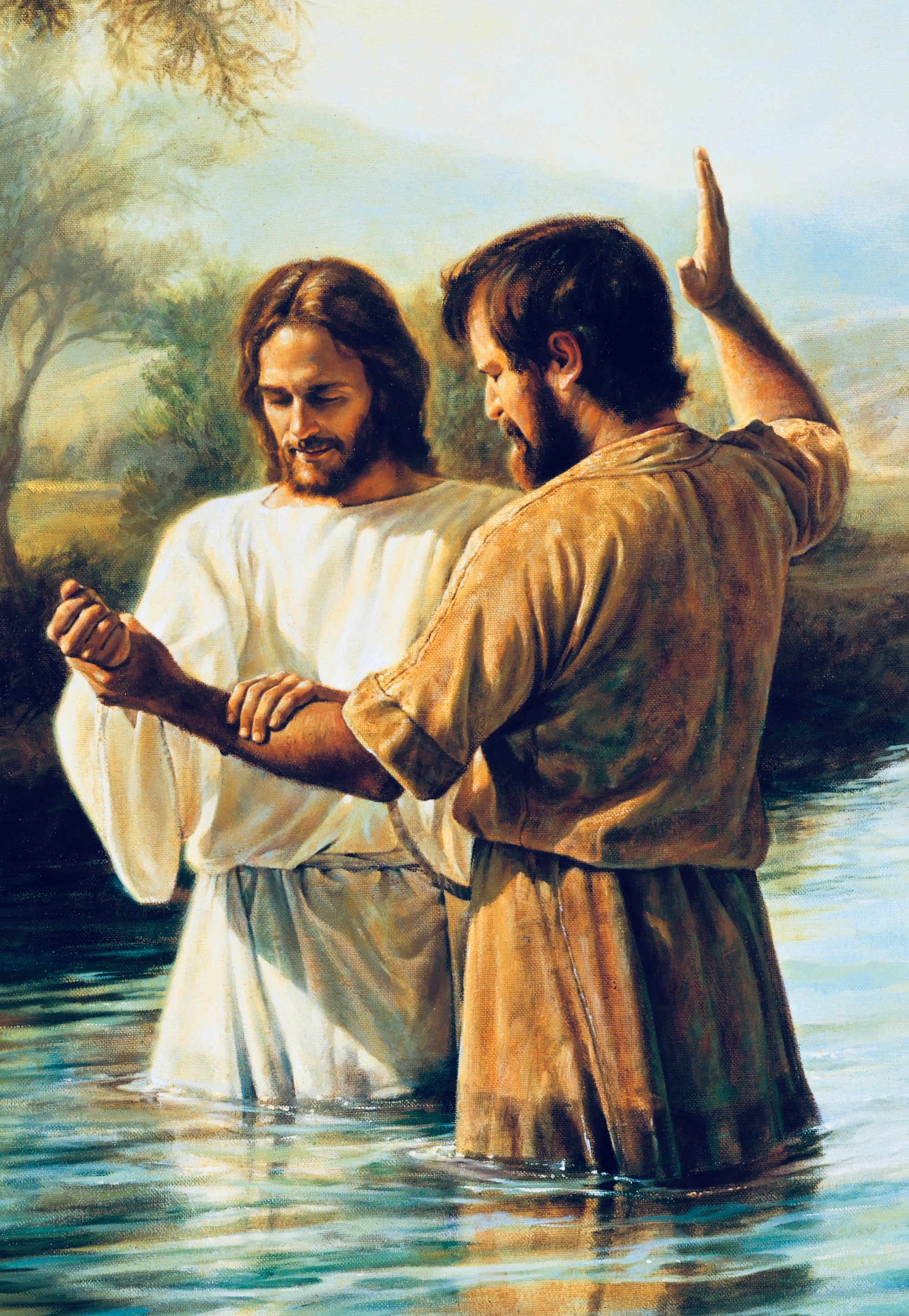
CLICK HERE for Jesus and John Were Relatives article
Both men were about 30 years old as Luke says “Now Jesus himself was about thirty years old when he began his ministry.” (Luke 3:23) From the timeline that the Doctor (Colossians 4:14) Luke in chapter 3:1 assiduously gives us, it is sure that His baptism by cousin John took place while Pontius Pilate was serving as the governor of Judea and Tiberius was 15 years into being Emperor of Rome in the late 20’s probably in 29 AD.
This long article is about some of the c. 24 – 25 places to which Jesus went, performed miracles and ministered to people.
The answer to the question, “How many places did Jesus visit?” must start with Jesus’ birth in BETHLEHEM and then the family flight to EGYPT. The very infancy of His life was one of TRAVEL. When Jesus was a child, He was raised in the northern Israel town of NAZARETH, in the Galilee Area. Perhaps because Jesus was a hometown boy:
“He (Jesus of Nazareth) could not do any miracles there, except lay his hands on a few sick people and heal them. And he was amazed at their lack of faith.” Mark 6:5,6
_________________________
CANA
Jesus performs His first public miracle at a wedding in Cana, a town in the Galilee region. His mother and some His disciples were there as were all the wedding guests. Cana was 3.78 miles from Mary and Joseph’s home in Nazareth—a short walking distance.
…a wedding took place at Cana in Galilee. Jesus’ mother was there, and Jesus and his disciples had also been invited to the wedding. When the wine was gone, Jesus’ mother said to him, “They have no more wine.” “Woman, why do you involve me?” Jesus replied. “My hour has not yet come.” His mother said to the servants, “Do whatever he tells you.” Nearby stood six stone water jars, the kind used by the Jews for ceremonial washing, each holding from twenty to thirty gallons. Jesus said to the servants, “Fill the jars with water”; so they filled them to the brim. Then he told them, “Now draw some out and take it to the master of the banquet.”
They did so, and the master of the banquet tasted the water that had been turned into wine. He did not realize where it had come from, though the servants who had drawn the water knew. Then he called the bridegroom aside and said, “Everyone brings out the choice wine first and then the cheaper wine after the guests have had too much to drink; but you have saved the best till now.” What Jesus did here in Cana of Galilee was the first of the signs through which he revealed his glory; and his disciples believed in him.” — John 2:1-11
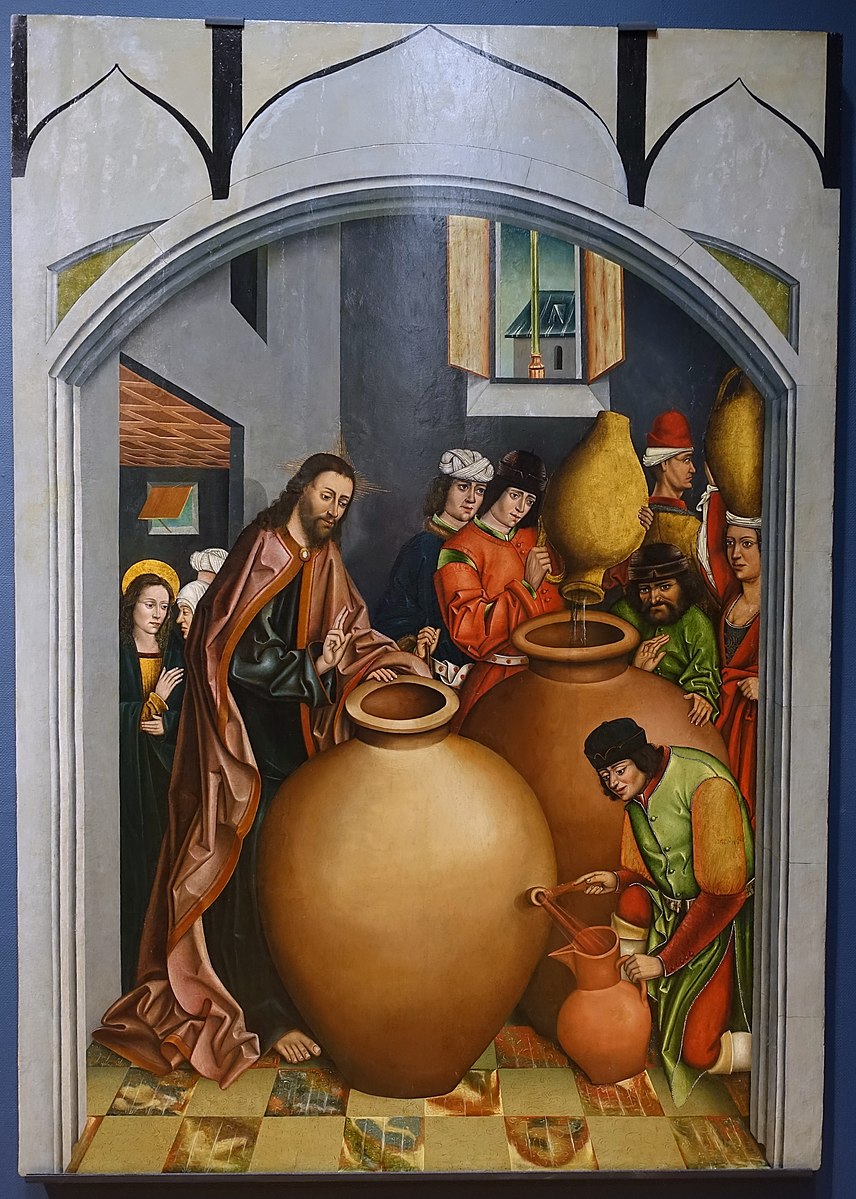
Note: Perhaps Jesus who was with some of His disciples at the wedding picked up another disciple in Cana at that time? John’s Gospel identifies one of Jesus’ Apostles in John 21:2 as “Nathanael from Cana in Galilee.”
_________________________
BETHSAIDA
On the Sea of Galilee; a fishing village in Jesus’ time. The hometown of the Apostles James, John, Simon Peter and Andrew. Jesus heals a blind man there:
“They came to Bethsaida, and some people brought a blind man and begged Jesus to touch him. He took the blind man by the hand and led him outside the village. When he had spit on the man’s eyes and put his hands on him, Jesus asked, “Do you see anything?” He looked up and said, “I see people; they look like trees walking around.” Once more Jesus put his hands on the man’s eyes. Then his eyes were opened, his sight was restored, and he saw everything clearly.“ — Mark 8:22-25
CLICK HERE for Jesus Uses Spit To Heal article
_________________________
CAPERNAUM
On the Sea of Galilee; located near Bethsaida; the hometown of the tax collector Matthew whom Jesus called to be another of His 12 Apostles; Jesus established Capernaum as his hometown (Mark 2:1) when He left Nazareth because of their unbelief in Him. In Capernaum He performed many more miracles than He did any place else: e.g. Luke 4:31-36; Luke 38:,39; Mark:21-28; Matthew 8:5; Mark 2:1-12 etc.
Capernaum is cited continually in all four Gospels and that area is, traditionally, believed to be where Jesus fed the 5,000 people. That miracle of Multiplication was (is) so astonishing that it is recorded in all four Gospels: Matthew 14; Mark 6; Luke 9 & John 6.
_________________________
DECAPOLIS
Jesus moved East of the Galilee area into the Decapolis area. It was named after the 10 (deka) cities (polis) which were in that area. It was a region of 10 Greco-Roman cities, a Gentile region. Jesus ministered to and did miracles for the Gentiles there.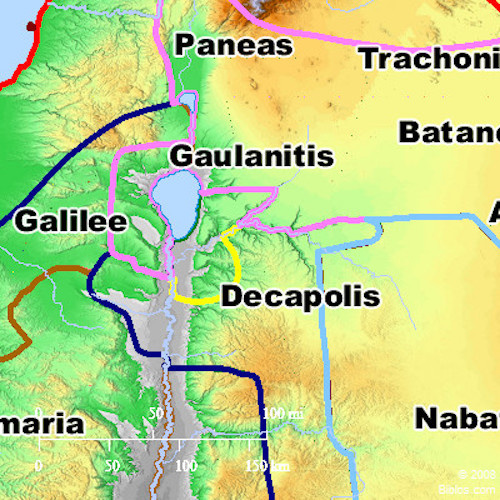
In Jesus’ first trip to that Gentile area:
“They went across the lake to the region of the Gerasenes (in Gadara). When Jesus got out of the boat, a man with an impure spirit came from the tombs to meet him. This man lived in the tombs, and no one could bind him anymore, not even with a chain. For he had often been chained hand and foot, but he tore the chains apart and broke the irons on his feet. No one was strong enough to subdue him. Night and day among the tombs and in the hills he would cry out and cut himself with stones….Then Jesus asked him, “What is your name?” “My name is Legion,” he replied, “for we are many.” And he begged Jesus again and again not to send them out of the area.
A large herd of pigs was feeding on the nearby hillside. The demons begged Jesus, “Send us among the pigs; allow us to go into them.” He gave them permission, and the impure spirits came out and went into the pigs….Those tending the pigs ran off and reported this in the town and countryside, and the people went out to see what had happened. When they came to Jesus, they saw the man who had been possessed by the legion of demons, sitting there, dressed and in his right mind; and they were afraid. Those who had seen it told the people what had happened to the demon-possessed man—and told about the pigs as well. Then the people began to plead with Jesus to leave their region.” — Mark 5:1-17
Those Gentiles raised pigs for market. They were not welcoming to the kosher Jesus.
_________________________
TYRE AND SIDON
Jesus went northwest of the Galilee area into the prosperous Gentile cities of Tyre and Sidon on the coast of the Mediterranean. Those Gentiles loved Jesus.
‘When they heard about all he was doing, many people came to him from Judea, Jerusalem, Idumea, and the regions across the Jordan and around Tyre and Sidon.” — Mark 3:8
“Jesus …went to the vicinity of Tyre. He entered a house and did not want anyone to know it; yet he could not keep his presence secret. In fact, as soon as she heard about him, a woman whose little daughter was possessed by an impure spirit came and fell at his feet. The woman was a Greek, born in Syrian Phoenicia. She begged Jesus to drive the demon out of her daughter. “First let the children eat all they want,” he told her, “for it is not right to take the children’s bread and toss it to the dogs.” “Lord,” she replied, “even the dogs under the table eat the children’s crumbs.” Then he told her, “For such a reply, you may go; the demon has left your daughter.” She went home and found her child lying on the bed, and the demon gone. Then Jesus left the vicinity of Tyre and went through Sidon, down to the Sea of Galilee and into the region of the Decapolis.” — Mark 7:4-31
Those pagan cities had been so welcoming to Jesus that He pronounced:
“Woe to you, Chorazin! Woe to you, Bethsaida! (cities in Jewish Israel) For if the miracles that were performed in you had been performed in Tyre and Sidon, they would have repented long ago in sackcloth and ashes. But I tell you, it will be more bearable for Tyre and Sidon on the day of judgment than for you.” — Matthew 11:21,22
“Then Jesus left the vicinity of Tyre and went through Sidon, (mainly Gentile areas) down to the Sea of Galilee and into the region of the Decapolis. There some people brought to him a man who was deaf and could hardly talk, and they begged Jesus to place his hand on him. After he took him aside, away from the crowd, Jesus put his fingers into the man’s ears. Then he spit and touched the man’s tongue. He looked up to heaven and with a deep sigh said to him, “Ephphatha!” (which means “Be opened!”). At this, the man’s ears were opened, his tongue was loosened and he began to speak plainly. — Mark 7:31-35
“News about him spread all over Syria, and people brought to him all who were ill with various diseases, those suffering severe pain, the demon-possessed, those having seizures, and the paralyzed; and he healed them. Large crowds from Galilee, the Decapolis, Jerusalem, Judea and the region across the Jordan followed him.” — Matthew 4:24, 25
CLICK HERE for Jesus and Constant Crowds article
_________________________
NAIN
“…Jesus went to a town called Nain, and his disciples and a large crowd went along with him. As he approached the town gate, a dead person was being carried out—the only son of his mother, and she was a widow. And a large crowd from the town was with her. When the Lord saw her, his heart went out to her and he said, “Don’t cry.” Then he went up and touched the bier they were carrying him on, and the bearers stood still. He said, “Young man, I say to you, get up!” The dead man sat up and began to talk, and Jesus gave him back to his mother.” — Luke 7:11-17
This was the first time in the Gospels where Jesus raised the dead.
_________________________
SEA OF GALILEE
“As Jesus was walking beside the Sea of Galilee, he saw two brothers, Simon called Peter and his brother Andrew. They were casting a net into the lake, for they were fishermen. “Come, follow me,” Jesus said, “and I will send you out to fish for people.” At once they left their nets and followed him. Going on from there, he saw two other brothers, James son of Zebedee and his brother John. They were in a boat with their father Zebedee, preparing their nets. Jesus called them, and immediately they left the boat and their father and followed him.” — Matthew 4:18-22
Jesus “caught” four of His Apostles as they were fishing or mending nets on the Sea of Galilee.
And Jesus reappeared to seven of His Apostles on the Sea of Galilee after His resurrection and fortified the idea that they were to be “fishers of men,” “I will send you to fish for people”—not to fish fish.
“After these things (after the resurrection) Jesus manifested Himself again to the disciples at the Sea of Tiberias (aka Sea of Galilee), and He manifested Himself in this way. Simon Peter, and Thomas called Didymus, and Nathanael of Cana in Galilee, and the sons of Zebedee, and two others of His disciples were together. Simon Peter said to them, “I am going fishing.” They said to him, “We will also come with you.” They went out and got into the boat; and that night they caught nothing.
But when the day was now breaking, Jesus stood on the beach; yet the disciples did not know that it was Jesus. So Jesus said to them, “Children, you do not have any fish, do you?” They answered Him, “No.” And He said to them, “Cast the net on the right-hand side of the boat and you will find a catch.” So they cast, and then they were not able to haul it in because of the great number of fish. Therefore that disciple whom Jesus loved said to Peter, “It is the Lord.” So when Simon Peter heard that it was the Lord, he put his outer garment on (for he was stripped for work), and threw himself into the sea. But the other disciples came in the little boat, for they were not far from the land, but about one hundred yards away, dragging the net full of fish.” — John 21:1-8
_________________________
GETHSEMANE
In the gospels, immediately after the Last Supper, Jesus and His disciples go to the garden in Gethsemane outside of Jerusalem. “Gethsemane” means “an oil press.” An oil press is a mechanical device which was used to crush olives and extract the essence, the oil out of them.
It was in Gethsemane, in that oil press, that Jesus struggled in agony until His sweat turned to blood:
“He knelt down and began to pray, saying, “Father, if You are willing, remove this cup from Me; yet not My will, but Yours be done.” Now an angel from heaven appeared to Him, strengthening Him. And being in agony, He was praying very fervently; and His sweat became like drops of blood, falling down upon the ground” Luke 22:41-44
CLICK HERE for Jesus Sweats Real Blood in Gethsemane article
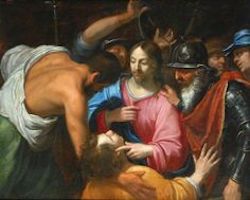 Importantly, Jesus performed his very last miracle before His crucifixion and death on an enemy in the Garden of Gethsemane:
Importantly, Jesus performed his very last miracle before His crucifixion and death on an enemy in the Garden of Gethsemane:
“And one of them( Peter) smote the servant of the high priest, and cut off his right ear. And Jesus answered and said, Suffer ye thus far. And he touched his ear, and healed him.” — Luke 22:50–51
_________________________
JERICHO
We all know the song “Joshua Fit The Battle of Jericho And the Walls Came Tumbling Down” sung by the great Gospel Singer Mahalia Jackson. (READ: Joshua 6:1–27 for the real Battle of Jericho in c. 1400 BC.)
Jericho has been excavated for many years by archeologists. It is apparently the oldest human settlement on earth—going back to c. 9000 BC. In the times of Joshua, a revetment wall built of large stones was supported by a mud-brick wall above it. This portion of Jericho’s wall was found in 1997. Bryant Wood, a Biblical archeologist, emphasizes the base of that mud-brick wall. All experts agree that the wall just fell down, but they differ on the date. Wood’s conclusions are the most informed; he dates the “falling down” of the wall to the time of Joshua (1400 BC).
Over c. 1,400 years later, Jesus of Nazareth came to the rebuilt city of Jericho in southern Israel:
“Jesus entered Jericho and was passing through. A man was there by the name of Zacchaeus; he was a chief tax collector and was wealthy. He wanted to see who Jesus was, but because he was short he could not see over the crowd. So he ran ahead and climbed a sycamore-fig tree to see him, since Jesus was coming that way. When Jesus reached the spot, he looked up and said to him, “Zacchaeus, come down immediately. I must stay at your house today.” So he came down at once and welcomed him gladly. All the people saw this and began to mutter, “He has gone to be the guest of a sinner.” But Zacchaeus stood up and said to the Lord, “Look, Lord! Here and now I give half of my possessions to the poor, and if I have cheated anybody out of anything, I will pay back four times the amount.” Jesus said to him, “Today salvation has come to this house, because this man, too, is a son of Abraham. For the Son of Man came to seek and to save the lost.” — Luke 19:1-10
“Then they came to Jericho. As Jesus and his disciples, together with a large crowd, were leaving the city, a blind man, Bartimaeus (which means “son of Timaeus”), was sitting by the roadside begging. When he heard that it was Jesus of Nazareth, he began to shout, “Jesus, Son of David, have mercy on me!” Many rebuked him and told him to be quiet, but he shouted all the more, “Son of David, have mercy on me!” Jesus stopped and said, “Call him.”
They called to the blind man, “Cheer up! On your feet! He’s calling you.” Throwing his cloak aside, he jumped to his feet and came to Jesus. “What do you want me to do for you?” Jesus asked him. The blind man said, “Rabbi, I want to see.” “Go,” said Jesus, “your faith has healed you.” Immediately he received his sight and followed Jesus along the road.” — Mark 10:46-52
_________________________
BETHANY
“Now a man named Lazarus was sick. He was from Bethany, the village of Mary and her sister Martha….So the sisters sent word to Jesus, “Lord, the one you love is sick.” When he heard this, Jesus said, “This sickness will not end in death. No, it is for God’s glory so that God’s Son may be glorified through it.” Now Jesus loved Martha and her sister and Lazarus. So when he heard that Lazarus was sick, he stayed where he was two more days, and then he said to his disciples, “Let us go back to Judea.”
“But Rabbi,” they said, “a short while ago the Jews there tried to stone you, and yet you are going back?”….After he had said this, he went on to tell them, “Our friend Lazarus has fallen asleep; but I am going there to wake him up.” His disciples replied, “Lord, if he sleeps, he will get better.” Jesus had been speaking of his death, but his disciples thought he meant natural sleep. So then he told them plainly, “Lazarus is dead, and for your sake I am glad I was not there, so that you may believe. But let us go to him.”….On his arrival, Jesus found that Lazarus had already been in the tomb for four days…. “Lord,” Martha said to Jesus, “if you had been here, my brother would not have died. But I know that even now God will give you whatever you ask. Jesus said to her, “Your brother will rise again.” Martha answered, “I know he will rise again in the resurrection at the last day.”Jesus said to her, “I am the resurrection and the life. The one who believes in me will live, even though they die; and whoever lives by believing in me will never die. Do you believe this?” “Yes, Lord,” she replied, “I believe that you are the Messiah, the Son of God, who is to come into the world.”
After she had said this, she went back and called her sister Mary aside. “The Teacher is here,” she said, “and is asking for you.” When Mary heard this, she got up quickly and went to him. Now Jesus had not yet entered the village, but was still at the place where Martha had met him. When the Jews who had been with Mary in the house, comforting her, noticed how quickly she got up and went out, they followed her, supposing she was going to the tomb to mourn there…. When Mary reached the place where Jesus was and saw him, she fell at his feet and said, “Lord, if you had been here, my brother would not have died.” When Jesus saw her weeping, and the Jews who had come along with her also weeping, he was deeply moved in spirit and troubled. “Where have you laid him?” he asked. “Come and see, Lord,” they replied. Jesus wept. Then the Jews said, “See how he loved him!”….Jesus, once more deeply moved, came to the tomb. It was a cave with a stone laid across the entrance. “Take away the stone,” he said. “But, Lord,” said Martha, the sister of the dead man, “by this time there is a bad odor, for he has been there four days.” Then Jesus said, “Did I not tell you that if you believe, you will see the glory of God?”So they took away the stone. Then Jesus looked up and said, “Father, I thank you that you have heard me. I knew that you always hear me, but I said this for the benefit of the people standing here, that they may believe that you sent me.” When he had said this, Jesus called in a loud voice, “Lazarus, come out!”
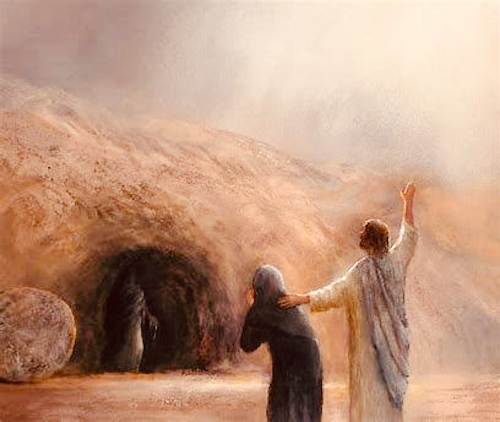
The dead man came out, his hands and feet wrapped with strips of linen, and a cloth around his face. Jesus said to them, “Take off the grave clothes and let him go.”
Therefore many of the Jews who had come to visit Mary, and had seen what Jesus did, believed in him. But some of them went to the Pharisees and told them what Jesus had done.” — John 11:1-46
The resurrection of Lazarus, Jesus’ last miracle of bringing the dead back to life, was maybe about 10 or so days ’ before Jesus’ Own resurrection. He had told Martha in John 11:25 “I am the resurrection and the life.” This last great miracle was a concrete parable and prognostication to Martha, et al of Jesus’ OWN RESURRECTION on a Sunday in c.30 AD.
Lazarus, Mary and Martha were prominent people in the Bethany -Jerusalem area. Bethany was only 2 miles from Jerusalem and when Jesus was in Jerusalem, He loved to spend time with Lazarus and his two sisters.
_________________________
JERUSALEM
The Roman historian Tacitus (56-120 AD) is considered to be one of the greatest Roman historians. He said in his Annals (dealing with Roman empire between 14-68 AD) that Jerusalem in Jesus’ times had about 600,000 people who lived there. The city was best known for its Temple of the Jews’ One God. Jerusalem was a bustling and peaceful city at that time. But it was under Roman rule and the Jews hated that. The Roman government’s policy was to maintain law, order, stability. When Jesus came into the Temple (during Passover) and saw the money-changers:
“…Jesus went into the temple of God, and cast out all them that sold and bought in the temple, and overthrew the tables of the money changers, and the seats of them that sold doves, And said unto them, It is written, My house shall be called the house of prayer; but ye have made it a den of thieves.” — Matthew 21:12
This was not appreciated by the priests of that time because they feared the Romans would exact a punishment on them for not keeping law and order. But this Jesus Who was becoming very popular with the people, near and far, was a “trouble-maker” and He even claimed to be the “Son of God”—the long-predicted in the Old Testament Messiah.
Jesus visited Jerusalem at least 7 times. The first time was when He was first born and his parents took Him to the Temple priests. (Luke 2:22) The last time was when He entered Jerusalem during Passover accompanied by a jubilant crowd. (Palm Sunday)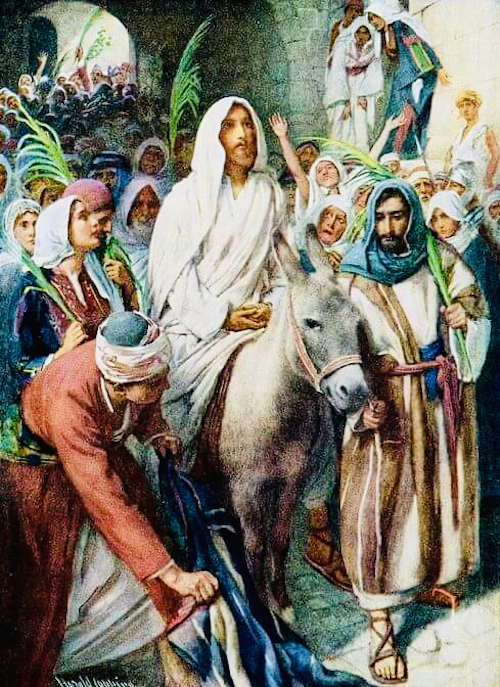
Five days later He was apprehended, tried by the Sanhedrin and crucified:
“So the soldiers took charge of Jesus. Carrying his own cross, he went out to the place of the Skull (which in Aramaic is called Golgotha). There they crucified him, and with him two others—one on each side and Jesus in the middle. Pilate had a notice prepared and fastened to the cross. It read: “jesus of nazareth, the king of the jews”. Many of the Jews read this sign, for the place where Jesus was crucified was near (Jerusalem), and the sign was written in Aramaic, Latin and Greek. The chief priests of the Jews protested to Pilate, “Do not write ‘The King of the Jews,’ but that this man claimed to be king of the Jews.” Pilate answered, “What I have written, I have written.” — John 19:16-22
Jerusalem was destroyed by the Romans in 70 AD and was torn apart stone by stone until a passerby would not have known there had been a city there. But three days after the dead Jesus was laid in His tomb with a large stone rolled in front of it, Jesus of Nazareth, the King of the Jews, their Mashiach rose from the dead and is still living.
_________________________
Christians form the biggest religious group in the world today, with 2.3 billion followers of Christ or 31.2% of the total world population of 7.3 billion. Jesus has “visited” the whole planet earth.—Article by Sandra Sweeny Silver

